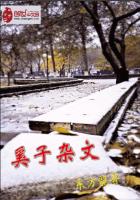Thought, under the form of edifice, could have beheld itself burned in the public square by the hands of the executioner, in its manuscript form, if it had been sufficiently imprudent to risk itself thus; thought, as the door of a church, would have been a spectator of the punishment of thought as a book. Having thus only this resource, masonry, in order to make its way to the light, flung itself upon it from all quarters.
Hence the immense quantity of cathedrals which have covered Europe--a number so prodigious that one can hardly believe it even after having verified it. All the material forces, all the intellectual forces of society converged towards the same point: architecture. In this manner, under the pretext of building churches to God, art was developed in its magnificent proportions.
Then whoever was born a poet became an architect.
Genius, scattered in the masses, repressed in every quarter under feudalism as under a ~testudo~ of brazen bucklers, finding no issue except in the direction of architecture,--gushed forth through that art, and its Iliads assumed the form of cathedrals. All other arts obeyed, and placed themselves under the discipline of architecture. They were the workmen of the great work. The architect, the poet, the master, summed up in his person the sculpture which carved his fa?ades, painting which illuminated his windows, music which set his bells to pealing, and breathed into his organs. There was nothing down to poor poetry,--properly speaking, that which persisted in vegetating in manuscripts,--which was not forced, in order to make something of itself, to come and frame itself in the edifice in the shape of a hymn or of prose; the same part, after all, which the tragedies of AEschylus had played in the sacerdotal festivals of Greece; Genesis, in the temple of Solomon.
Thus, down to the time of Gutenberg, architecture is the principal writing, the universal writing. In that granite book, begun by the Orient, continued by Greek and Roman antiquity, the Middle Ages wrote the last page. Moreover, this phenomenon of an architecture of the people following an architecture of caste, which we have just been observing in the Middle Ages, is reproduced with every analogous movement in the human intelligence at the other great epochs of history. Thus, in order to enunciate here only summarily, a law which it would require volumes to develop: in the high Orient, the cradle of primitive times, after Hindoo architecture came Phoenician architecture, that opulent mother of Arabian architecture; in antiquity, after Egyptian architecture, of which Etruscan style and cyclopean monuments are but one variety, came Greek architecture (of which the Roman style is only a continuation), surcharged with the Carthaginian dome; in modern times, after Romanesque architecture came Gothic architecture. And by separating there three series into their component parts, we shall find in the three eldest sisters, Hindoo architecture, Egyptian architecture, Romanesque architecture, the same symbol; that is to say, theocracy, caste, unity, dogma, myth, God: and for the three younger sisters, Phoenician architecture, Greek architecture, Gothic architecture, whatever, nevertheless, may be the diversity of form inherent in their nature, the same signification also; that is to say, liberty, the people, man.
In the Hindu, Egyptian, or Romanesque architecture, one feels the priest, nothing but the priest, whether he calls himself Brahmin, Magian, or Pope. It is not the same in the architectures of the people. They are richer and less sacred.
In the Phoenician, one feels the merchant; in the Greek, the republican; in the Gothic, the citizen.
The general characteristics of all theocratic architecture are immutability, horror of progress, the preservation of traditional lines, the consecration of the primitive types, the constant bending of all the forms of men and of nature to the incomprehensible caprices of the symbol. These are dark books, which the initiated alone understand how to decipher.
Moreover, every form, every deformity even, has there a sense which renders it inviolable. Do not ask of Hindoo, Egyptian, Romanesque masonry to reform their design, or to improve their statuary. Every attempt at perfecting is an impiety to them. In these architectures it seems as though the rigidity of the dogma had spread over the stone like a sort of second petrifaction. The general characteristics of popular masonry, on the contrary, are progress, originality, opulence, perpetual movement. They are already sufficiently detached from religion to think of their beauty, to take care of it, to correct without relaxation their parure of statues or arabesques. They are of the age. They have something human, which they mingle incessantly with the divine symbol under which they still produce. Hence, edifices comprehensible to every soul, to every intelligence, to every imagination, symbolical still, but as easy to understand as nature. Between theocratic architecture and this there is the difference that lies between a sacred language and a vulgar language, between hieroglyphics and art, between Solomon and Phidias.
If the reader will sum up what we have hitherto briefly, very briefly, indicated, neglecting a thousand proofs and also a thousand objections of detail, be will be led to this: that architecture was, down to the fifteenth century, the chief register of humanity; that in that interval not a thought which is in any degree complicated made its appearance in the world, which has not been worked into an edifice; that every popular idea, and every religious law, has had its monumental records; that the human race has, in short, had no important thought which it has not written in stone. And why?















